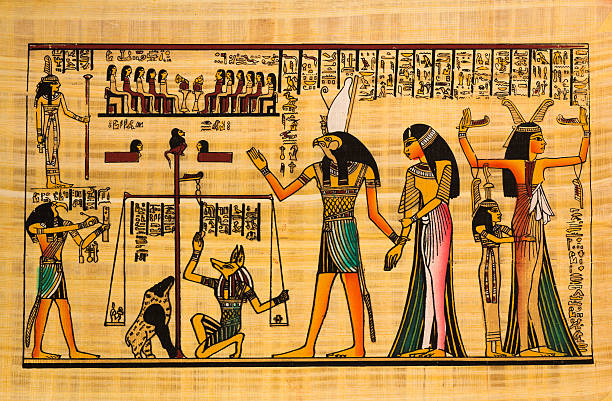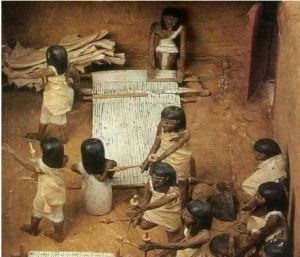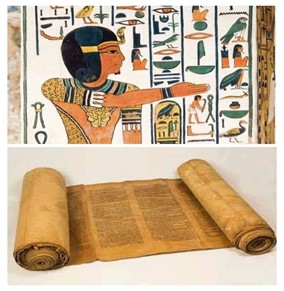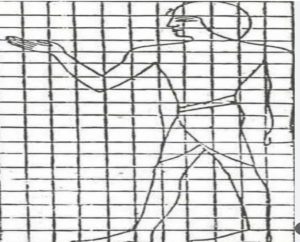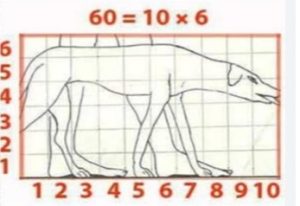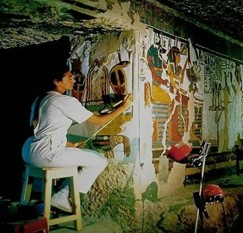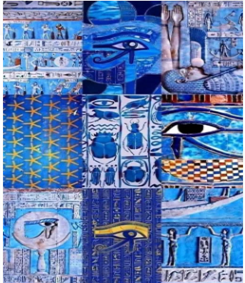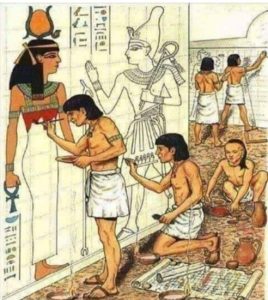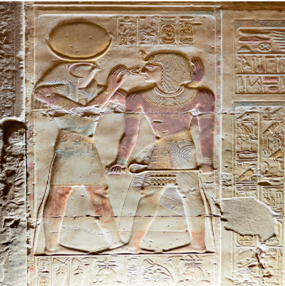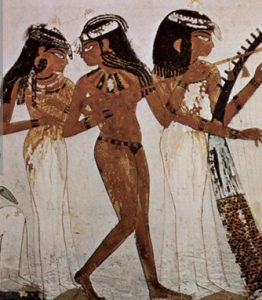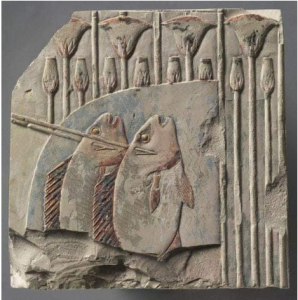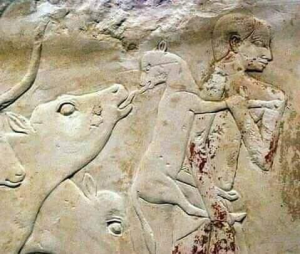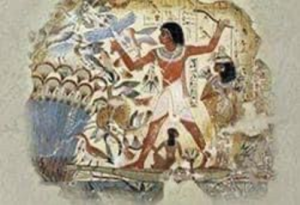Art in Ancient Egypt
Art in ancient Egypt is considered the foundation of the ancient Egyptian language (hieroglyphics). Similarly, the art of sculpture is the basis of our knowledge of ancient Egyptian history. Inscriptions, on the other hand, are a mirror to ancient Egyptian life and religious thought. -Writing on Papyrus
Measurement in Art
Ancient Egyptian artists were masters of creativity. They used to divide a painting into specific squares (units) using a pencil, dividing it into one hundred squares or units (10×10) for the human body. Animals, on the other hand, were drawn in 60 units (6×10). Royal figures were drawn with more units above the head, being measured from 10 to 14 units, to – 10*10 units for the human body
60*10 units for the animal body
Colors
There were four primary colors: white, yellow, red, and blue. Four secondary colors were derived from these: green, brown, gray, and black.
Using colors in drawing in tombs
Palette of colors
Blue represented the Nile and the sky, a primary color for the Egyptians.
Subjects of Ancient Egyptian Art
Men and Women: The image of a man was used to determine proportions in artwork. Due to the artist’s inclination to portray the person ideally, the artist would practice drawing men, especially when they were bare-chested. Women, on the other hand, were always depicted with slender figures, delicate features, and wide eyes. Since women were always depicted in clothing, they were often drawn in transparent clothes that revealed the beauty of the body’s details. Women were consistently distinguished by light colors, while men were predominantly depicted in darker hues. -Artist Drawing a woman
Royal Figures
The king was considered a divine figure and was therefore depicted ideally. The exception was the reign of Akhenaten, who portrayed himself, his wife, and his children in a human form, revealing human features rather than idealized ones. -An idealized portrait of King Seti I from the Temple of Abydos
Picturing Music and Dance
Music played an important role not only in celebrations and weddings, but also in religious rituals. Hence, dancers, musical instruments, and musicians were depicted on the walls of temples and tombs in Egypt.
HIKINO” and “ETTY” the Old Kingdom, 5th Dynasty, founded in Saqqara
The Middle Kingdom, 11th Dynasty, reign of King Mentuhotep II. Housed in the Cincinnati Museum of Art, Ohio, USA
The three musicians from the tomb of “Nakht”, West Thebes, 18th Dynasty
Scenes of hunting and warfare
These scenes always require an expression of dynamic movement and therefore demand a great deal of skill and expertise from the artist to convey the scene.
A scene of fishing with a harpoon
A scene of fishing with a harpoon (indicating two methods of fishing: harpoon and net) from the tombs of the Old Kingdom in Saqqara
A touching scene in the history of Egyptian civilization, we see a hunter wading through water carrying a young calf to protect it from drowning. However, a mother’s heart is the most tender, and we see the fear in her eyes and her heart nearly breaking for her child…from the tombs of the Old Kingdom in Saqqara
A magnificent view of a nobleman hunting in a boat among the reeds, with his wife behind him and his daughter below. Scenes of birds, geese, and plants represent the marshes of the Delta

